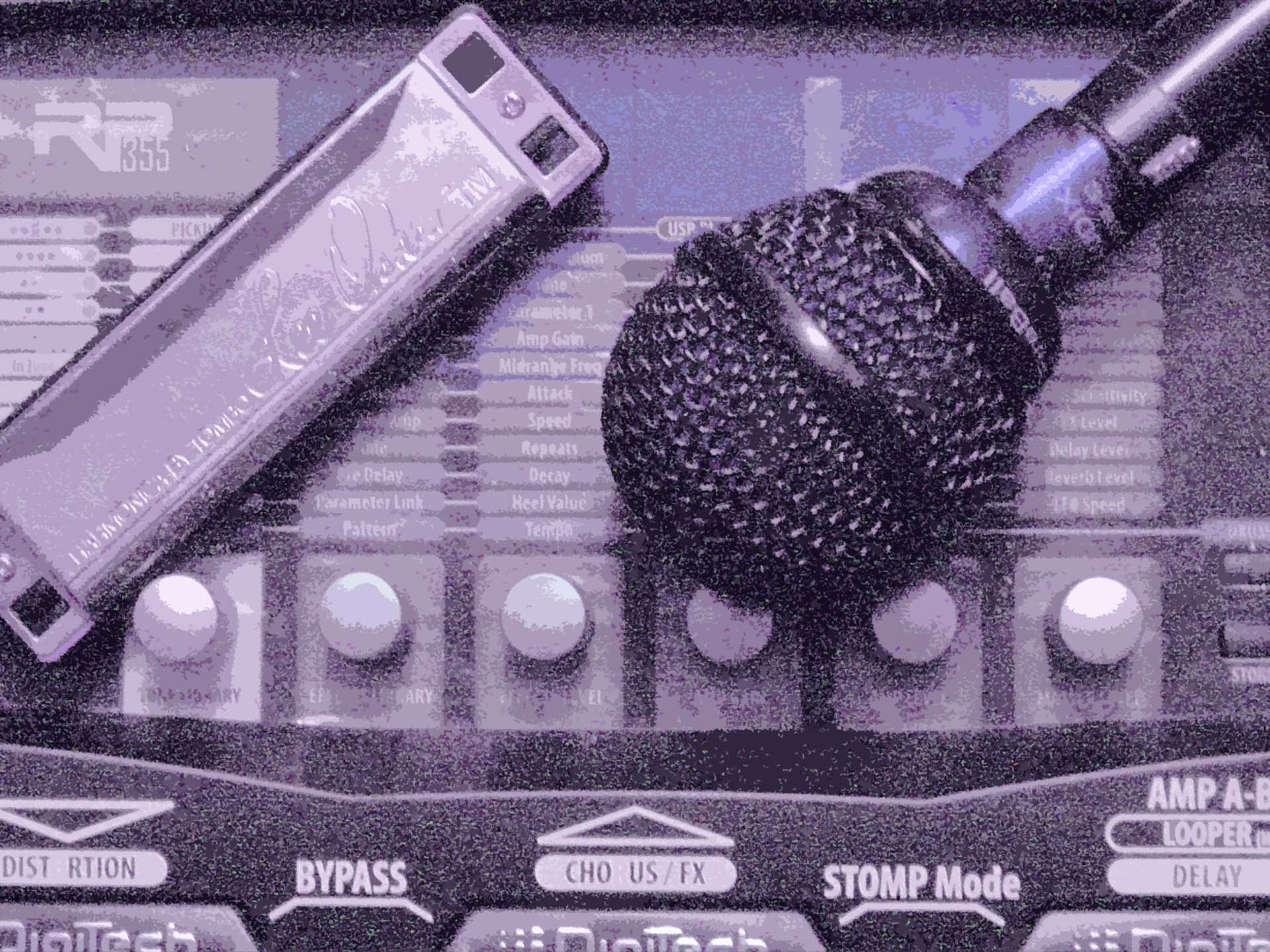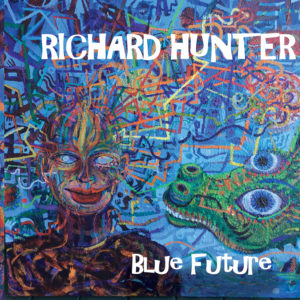
RP Tip #9: It’s a really good audio interface, especially for harp
UPDATE: At this point we don’t just think an RP is a “pretty good audio interface”; it’s the one we use for harmonica whenever we have the chance. See this post for a discussion of how we recorded a session for the big-budget BBC series “Copper” using our Digitech RP255 as the computer audio interface. Click here for samples from the tracks we recorded for a country-western artist in September 2015 using our Digitech RP360XP for the computer audio interface. Did I mention that I recorded the harmonica tracks for an ESPN documentary at my kitchen table in Idaho using an RP355 in December 2014?
So: now you can read the piece below, which describes our first experience with the RP as a computer audio interface. (Necessity is indeed the mother of invention. One of the mothers, anyway, and of course there are fathers too. And sisters, brothers, etc., but simple metaphors work better than complex ones.)
****
I was on the road this week (Note: July 21 2011), and I planned to record a session I’ve been hired to do, working in my hotel room, which is something I’ve done before with good results. Not so good this time. I’ve just switched to a new laptop running Windows 7; my old laptop ran Windows XP. It turned out that a Windows 7 driver is not available for the Tascam US-122, the audio interface I used with the old laptop. I discovered this when I tried to set up the Tascam with the new computer. I also tried my Zoom H4, which I had with me and which is also an audio interface, and that worked but sounded awful and had a lot of latency.
So I figured I had to get a new audio interface. There are lots of 16-bit USB audio interfaces with built in mic preamps available for less than $100, but 16 bit recording doesn’t sound very good to me–the noise floor is just too high. Then I remembered that the Digitech RPs from the 150 on function as a 24-bit 44.1 kHz audio interface. I had already installed the drivers for all my RPs, so I plugged my RP255 in via USB and started Sonar, my audio workstation.
What do you know: it works really well. The sound is very clear, with good level, when I record using the Fireball V mic and the Direct amp and cabinet models. I can adjust the recorded signal level easily using the Master Volume control, and I can monitor easily using the built in headphone jack. Latency is low too at 11.5 milliseconds, which is roughly the equivalent of the delay that you get when you play into a mic standing 11 feet away. And of course, if I wanted to record something with a big amped up sound, the RP255 would do that too.
The big amped sounds are really easy; the hard thing is to get a great clean sound that works on its own before you put the dirt on. The Direct model does that very nicely, and when you cup the harp in your hands with a clean mic like the Audix Fireball, you get a lovely harmonica sound from which the room sound is completely absent. That’s REALLY important when you’re trying to do usable tracks in a hotel room or a kitchen. The RP255 also has a Digitech Clean amp model that I’d like to try sometime. An RP350 or 355 has a Clean Tube preamp model, and that is something I want to try for sure. And I’d like to see what it sounds like when I hit Bypass. In the meantime, it’s nice to know that when Digitech said this thing was an audio interface, they meant it. If you own an RP and you’re thinking of getting into computer recording, you’ve already got the interface.
If you liked that, you’ll like these:
the 21st century blues harmonica manifesto in sound
Get it on Amazon
Get it on iTunes
the rock harmonica masterpiece
Get it on Amazon
Get it on iTunes
Related Posts
4 Comments
Leave a Reply
You must be logged in to post a comment.
WHAT’S NEW
Categories
- Audio/Video
- Blog
- Blue Future
- Digitech RP Tricks and Tips
- Discography, CDs, Projects, Info, Notes
- Featured Video
- For the Beginner
- Gallery
- Hunter's Effects
- Hunter's Music
- Huntersounds for Fender Mustang
- Meet the Pros
- More Video
- MPH: Maw/Preston/Hunter
- My Three Big Contributions
- Player's Resources
- Pro Tips & Techniques
- Recommended Artists & Recordings
- Recommended Gear
- Recorded Performances
- Reviews, Interviews, Testimonials
- The Lucky One
- Uncategorized
- Upcoming Performances
- Zoom G3 Tips and Tricks



Hi Richard, First, some long overdue fan groveling:). I bought ‘Jazz Harp’ many years ago and have gradually grown into it!… Thanks so much. I found your website while looking for an effects processor to use with a battery-powered busking amp I’m building from a salvaged (dead) Fender 185 guitar amp. I use a Fireball V and find that with my ‘big PA’ Roland BA-330 I can sing as well as play harmonica through the same mic/channel since I use very little effects on chromatic harmonica. Do you think it would be feasible to sing through an RP? I’m trying to get everything to fit into a bicycle trailer; another story, so want to keep everything as lean (and battery-powered) as possible.
Again thanks for a great site and information. I’ll go back to reading/listening
David
Hi David, thanks for the kudos, much appreciated. I’ve been experimenting with an RP250 for vocals, and it works pretty well–as with everything else to do with a multi-fx box, it takes a while to find the right settings. The big advantage of the newer RPs in that regard is that the delays and reverbs, which are very important for vocals, sound great, and you can use the amp models effectively to give you some very interesting tones. However, I would NOT buy an RP just for vocals–there are better processors for that purpose.
I fought with my RP 155 and notebook running Windows 7 but couldn’t record through the USB. I use Audacity. Finally found the USB Record Level adjustment. It is in the top line right under the LED display. You have to use the edit button to move to the top line and then use the third knob to adjust the level. The second knob adjusts the USB playback. The USB audio in was set at 0 and the USB audio out was set at max. Moving both toward the middle worked well for me. I think dropping the output helped the sound quality. Obviously raising the input from 0 helped with recording. These can also be adjusted in X-edit by clicking on the audio button at the bottom of the screen. I have to scroll down to actually see the virtual knobs that appear, but that might be my notebook computer. Now I can record but Audacity doesn’t record on my first attempt. I have to stop recording (nothing is recorded) and then lay down another track. All tracks after the first will record. I haven’t figured that problem out yet, but it doesn’t matter as the first dummy track is easily deleted. Also on the top line of effects is “pickup”. It is controlled by the first knob but it is for choosing guitar pickups. It has nothing to do with record or play back. The RP can playback tracks from the computer through your amp while your are playing through the mic and the RP into the amp, so you can create your own backing tracks and play along. Playback volume can be controlled with the RP or the computer.
Wow! Thanks for that detailed description of what works and doesn’t. The dummy track issue might be something to do with Audacity, as opposed to the RP–I use Cakewalk Sonar to record digital audio, and I’ve never had that problem. Very cool that you can use the RP to play audio from the computer while you play through the mic.